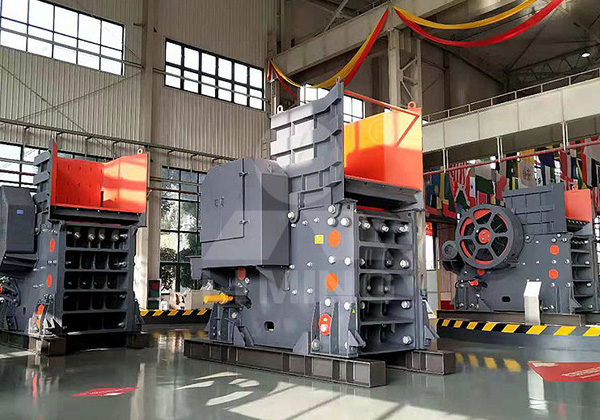A jaw crusher is a machine designed to reduce large rocks into smaller rocks, gravel, or rock dust. It is primarily used in the first stage of crushing, breaking down the material into manageable pieces for further processing. Jaw crushers are widely utilized in mining, construction, recycling, and aggregate production due to their simplicity, reliability, and high capacity. The fundamental operating principle of a jaw crusher is compression, with the two jaws exerting force on the material, crushing it into smaller parts.

Components of a Jaw Crusher
A typical jaw crusher consists of:
- Fixed Jaw Plate: This is the stationary plate, typically mounted to the body of the crusher. It provides a surface against which the movable jaw presses the material.
- Movable Jaw Plate: This is the moving part of the crusher, which moves back and forth relative to the fixed jaw. The material is compressed between the two plates and crushed.
- Pitman Arm: This connects the movable jaw to the eccentric shaft, which drives the motion.
- Eccentric Shaft: Powered by the motor, the eccentric shaft drives the motion of the pitman arm and the movable jaw, creating the compressive force necessary to crush materials.
- Toggle Plate: This component protects the crusher from damage by acting as a safety mechanism. If an uncrushable material enters the crusher, the toggle plate will break, preventing damage to the machine.
- Flywheel: This large wheel stores energy when the jaw is closing and releases it when the jaw is opening, helping to maintain consistent crushing force.
- Discharge Opening: The crushed material exits through this adjustable opening, which determines the size of the output product.
Working Principle
A jaw crusher operates on a straightforward mechanism. It uses a pair of vertical jaws, one of which is fixed while the other moves in a back-and-forth motion. The material is placed into the top of the machine, between the jaws. The movable jaw exerts force on the material, compressing it against the fixed jaw, thereby breaking it into smaller pieces. The crushed material is then discharged from the bottom opening, known as the discharge opening.
The size of the material after crushing is controlled by adjusting the gap between the two jaws. Larger gaps result in coarser materials, while smaller gaps produce finer crushed material.
Specifications – Technical Data
| Model | C6X80 | C6X100 | C6X110 | C6X125 | C6X145 | C6X160 | C6X200 | |
| Feed opening length(mm) | 800 | 1000 | 1100 | 1250 | 1450 | 1600 | 2000 | |
| Feed opening width(mm) | 520 | 760 | 850 | 950 | 1100 | 1200 | 1500 | |
| Power KW(Kw) | 75 | 110 | 160 | 160 | 200 | 250 | 400 | |
| Speed(rpm) | 350 | 260 | 230 | 220 | 220 | 220 | 200 | |
| Dimension(mm) | Discharge opening(mm) | T/h | T/h | T/h | T/h | T/h | T/h | T/h |
| 0-90 | 60 | 80-110 | ||||||
| 0-105 | 70 | 70 | 100-135 | |||||
| 0-120 | 80 | 110-150 | 150-200 | 160-240 | ||||
| 0-135 | 90 | 130-175 | 170-220 | 180-260 | ||||
| 0-150 | 100 | 145-190 | 190-250 | 200-280 | 240-340 | |||
| 0-185 | 125 | 180-245 | 235-310 | 250-360 | 280-410 | 320-470 | ||
| 0-225 | 150 | 225-290 | 280-360 | 300-430 | 340-480 | 370-550 | 420-610 | |
| 0-260 | 175 | 330-420 | 340-490 | 370-550 | 430-630 | 470-700 | 620-890 | |
| 0-300 | 200 | 380-550 | 420-620 | 480-710 | 530-790 | 690-1000 | ||
| 0-340 | 225 | 470-690 | 540-790 | 590-880 | 770-1100 | |||
| 0-375 | 250 | 520-760 | 600-870 | 650-970 | 850-1200 | |||
| 0-410 | 275 | 660-950 | 700-1060 | 930-1300 | ||||
| 0-450 | 300 | 750-1100 | 1000-1500 | |||||
Notice:
1. Any change of European Type Jaw Crusher technical data shall not be advised additionally.
